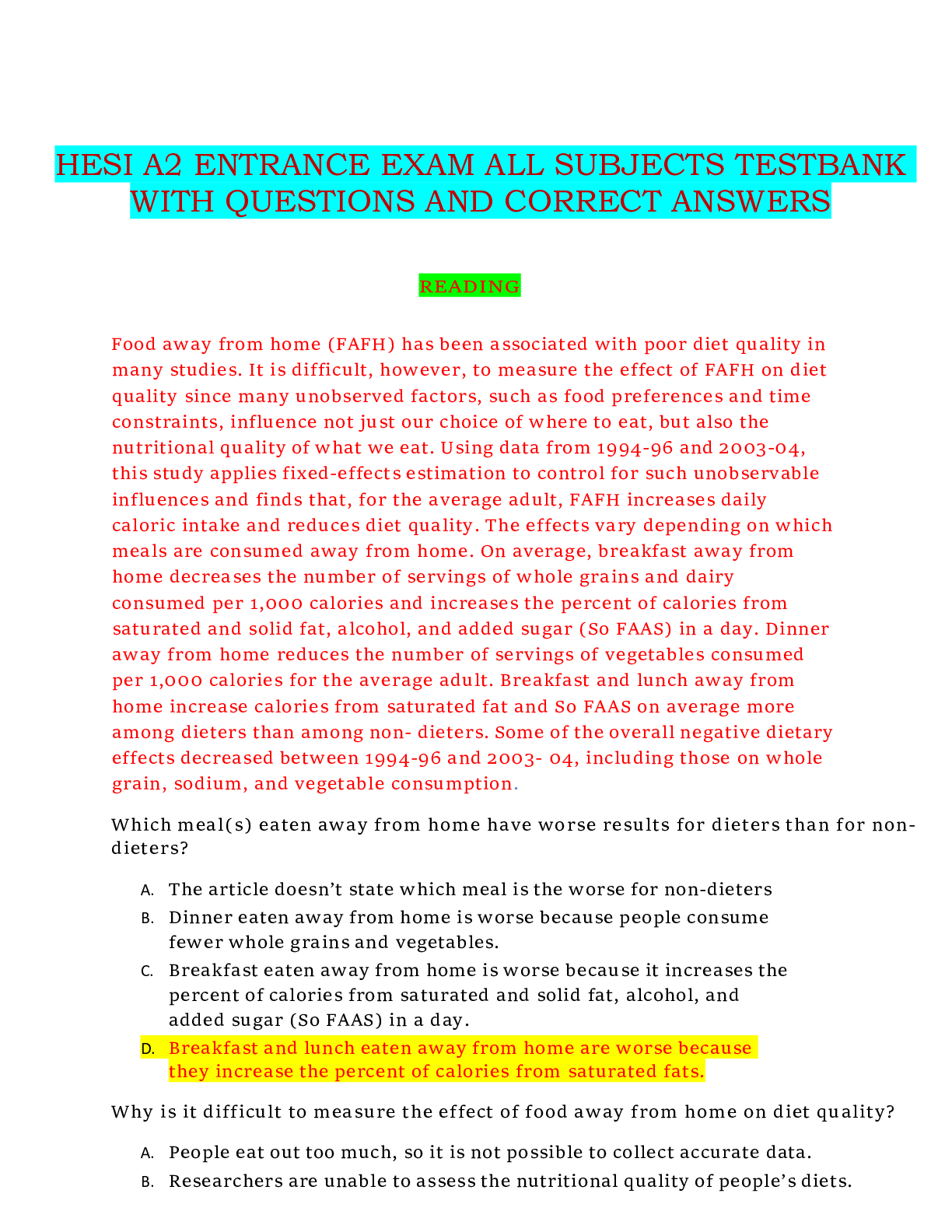Philosophy > TEST BANKS > PSYCHOLINGUISTICS TEST BANK WITH QUESTIONS AND ANSWERS. 100% VERIFIED LATEST UPDATE (All)
PSYCHOLINGUISTICS TEST BANK WITH QUESTIONS AND ANSWERS. 100% VERIFIED LATEST UPDATE
Document Content and Description Below
1) Dean experienced a seizure, during which he was unable to think of the name of things or objects. Dean’s seizure likely resulted in A) aphasia. B) agnosia. C) anomia. D) apoplexia. Answer: ... C 2) Our tendency to take language for granted was illustrated by the authors with the example of a professor for whom a seizure caused anomia or A) the inability to name things. B) the ability to see words, but not process their meaning. C) the ability to see words in colour. D) the inability to hear. Answer: A 3) The ambiguity of language is BEST illustrated by which of the following examples? A) Telling someone what time a party starts B) Giving instructions for an exam C) Disagreements about the interpretations of laws D) Calling a friend about whom you are worried Answer: C 4) Which of the following statements about language is TRUE? A) It is symbolic. B) It can be written, spoken, or signed. C) It is capable of an infinite set of meaningful utterances. D) All of the above. Answer: D 5) The authors provide a brief conversation between two students discussing tickets for a game. The inferences we make about this discussion indicate that A) the ways in which language can be interpreted are extremely limited. B) our ability to understand “slang” is very limited because it is a cognitively taxing event. C) most language use is quite literal. D)our ability to understand language requires implicit skills in accessing knowledge and interpreting phrases. Answer: D 6) Newspaper headlines, such as “Killer Sentenced to Die for Second Time in 10 Years,” may strike us as funny. From the perspective of language, this is because the phrase or headline A) lacks subject-verb agreement. B) has no literal interpretation. C) has ambiguous syntax. D) is impossible to interpret. Answer: C 7) As symbol systems of communication, most languages A) are arbitrary in the relationship between words and meaning. B) do not have concepts that are unique to just one particular language. C) can be translated to another without impaired meanings of complex concepts. D) generally match sounds to the meaning of words. Answer: A 8) Language is A) a communication system that requires little implicit processing. B) rarely ambiguous. C) a symbol system of communication. D) a communication system that includes words, but not gestures. Answer: C 9) Carl is reading the newspaper and laughs when he sees the headline “Drunk Gets Nine Months in Violin Case”. From the perspective of language, Carl most likely finds this humourous because the phrase or headline A) lacks subject-verb agreement. B) has ambiguous syntax. C) has no literal interpretation. D) has ambiguous word interpretations. Answer: D 10) Much of our language use serves non-informational purposes, such as A) maintaining social relationships. B) telling the barista that we want a skim latte. C) providing directions to an event. D) advising a friend what time to show up at a party. Answer: A 11) We often do not consider the complexity of language. This is in part because A) our use of language is generally automatic. B) language acquisition requires little practice. C) language acquisition is easy. D) humans do not often consider complex phenomena. Answer: A 12) The area of psycholinguistics that focuses on the sounds people use when then speak and listen to language is called A) morphology. B) phonology. C) syntax. D) semantics. Answer: B 13) The area of psycholinguistics that focuses on the meanings of words and sentences is called A) morphology. B) phonology. C) syntax. D) semantics. Answer: D 14) The area of psycholinguistics that focuses on how words are combined to form sentences is called A) morphology. B) phonology. C) syntax. D) semantics. Answer: C 15) Dr. Doolittle is studying the order in which children around the world learn to make the speech sounds used in their native languages, to see if there are common patterns. Dr. Doolittle's field of study is most probably A) morphology. B) phonology. C) syntax. D) semantics. Answer: B 16) Mado is sad that she has lost the French-Canadian that her French-Canadian parents spoke in her childhood. She knows many French-Canadian words, but she has forgotten how to put them together into real French-Canadian sentences. Mado seems to have a problem with FrenchCanadian A) morphology. B) phonology. C) syntax. D) semantics. Answer: C 17) What are the basic units of sound that compose the words in a language? A) lingmemes. B) morphemes. C) phonemes. D) anomias. Answer: C 18) In psycholinguistics, phonemes are A) the basic rules of grammar. B) the basic brain structures. C) the basic units of meaning. D) the basic units of sound. Answer: D 19) Consider the English word "rereading." Which of these is one PHONEME in that word? A) “read” B) “re” C) “r” D) “rea” Answer: C 20) Name the smallest units of speech that contain meaning. A) Lingmemes B) Morphemes C) Phonemes D) Anomias Answer: B 21) Consider the English word "rereading." Which of these is one MORPHEME in that word? A) Reading B) Re C) R D) Rea Answer: B 22) Basic units of sound are called ; basic units of meaning are called . A) phonemes, syntax B) phonemes, morphemes C) morphemes, phonemes D) morphemes, syntax Answer: B 23) Almost all words in any language contain more than . A) phonemes, syntax B) phonemes, morphemes C) morphemes, phonemes D) morphemes, syntax Answer: B 24) A study of morphology shows the first words babies learn to speak in any language typically refer to A) actions they enjoy doing (eat, run, play). B) how things look or feel (red, big, hot). C) how they feel (hungry, frightened, lonely). D) specific objects or people (mama, doggie, truck). Answer: D 25) The study of how words are combined together to form grammatical sentences and phrases is called A) morphology. B) phonology. C) syntax. D) semantics. Answer: C 26) In psycholinguistics, syntax is the study of A) the meanings of words and phrases. B) the basic sounds of a language. C) how words are combined into sentences. D) developing more effective computer languages. Answer: C 27) Which of these areas of psycholinguistics is most directly related to the fact that "the boy ate the chicken" and "the chicken ate the boy" mean very different things? A) morphology. B) phonology. C) syntax. D) semantics. Answer: C 28) The English language has phonemes. A) no more than 15 B) more than 100 C) between 60 and 75 D) between 40 and 45 Answer: D 29) Language is based on universal sound units called A) phonemes. B) morphemes. C) semantics. D) registers. Answer: A 30) How many morphemes are there in the sentence “I predicted it”? A) 4 B) 6 C) 5 D) 7 Answer: C 31) You are learning Russian in preparation for a trip next summer. Although you are doing a good job recognizing the written signs you need to know, you are having trouble with the sounds of the Russian language. Which of the following aspects of language is giving you trouble? A) Phonemes B) Morphemes C) Syntax D) Semantics Answer: A 32) The system of rules that governs how we assign meaning to the morphemes we use is called A) semantics. B) syntax. C) phonology. D) regularization. Answer: A 33) The system of rules that governs how we combine words to form grammatical sentences is called A) semantics. B) syntax. C) phonology. D) regularization. Answer: B 34) The basic meaningful units of any language are called A) phonemes. B) morphemes. C) semantics. D) registers. Answer: B 35) The sounds t, th, and sh are A) phonemes. B) morphemes. C) semantics. D) registers. Answer: A 36) What are the smallest units of meaning in a language? A) Phonemes B) Morphemes C) Semantics D) Registers Answer: A [Show More]
Last updated: 2 years ago
Preview 1 out of 450 pages

Buy this document to get the full access instantly
Instant Download Access after purchase
Buy NowInstant download
We Accept:

Reviews( 0 )
$35.00
Can't find what you want? Try our AI powered Search
Document information
Connected school, study & course
About the document
Uploaded On
Jan 09, 2023
Number of pages
450
Written in
Additional information
This document has been written for:
Uploaded
Jan 09, 2023
Downloads
0
Views
148



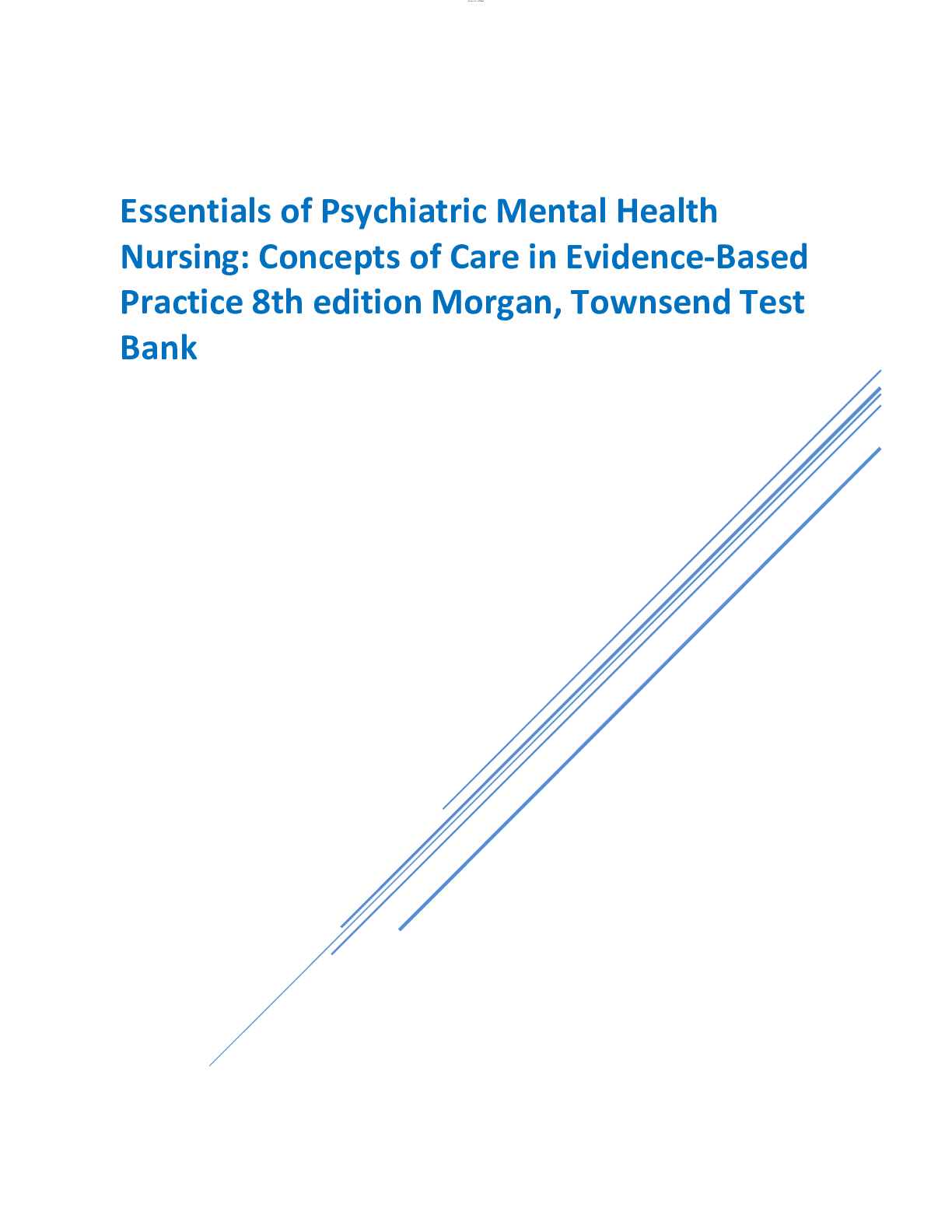
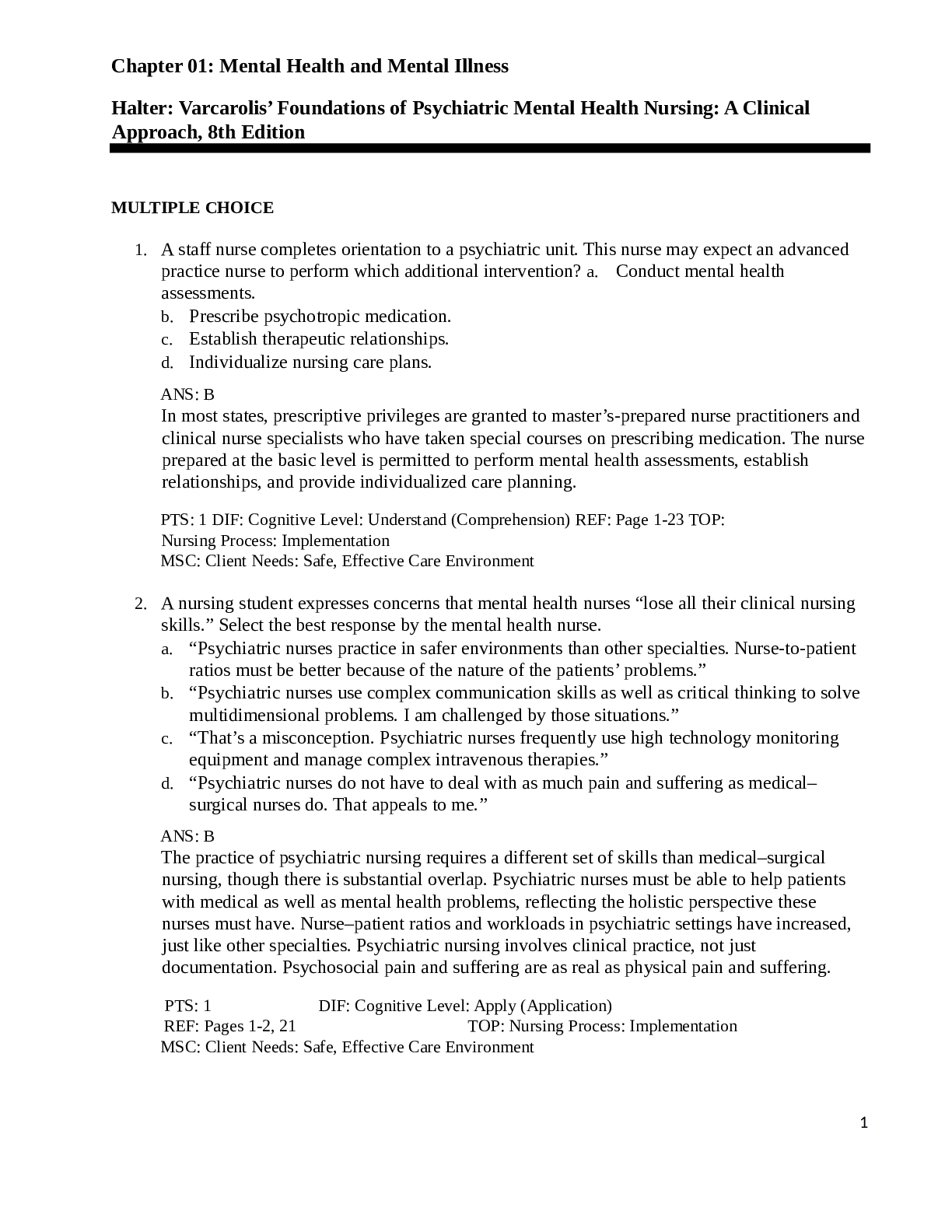


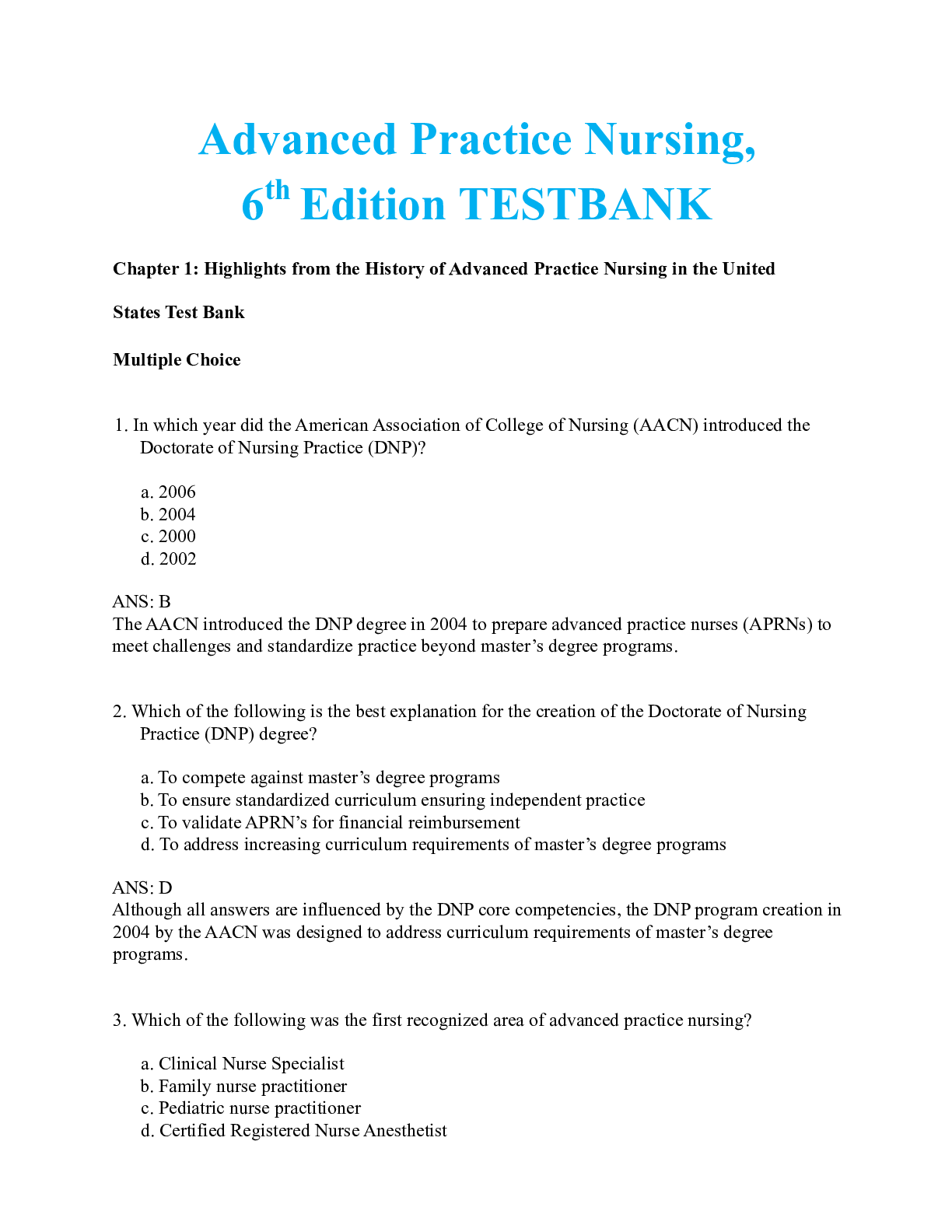
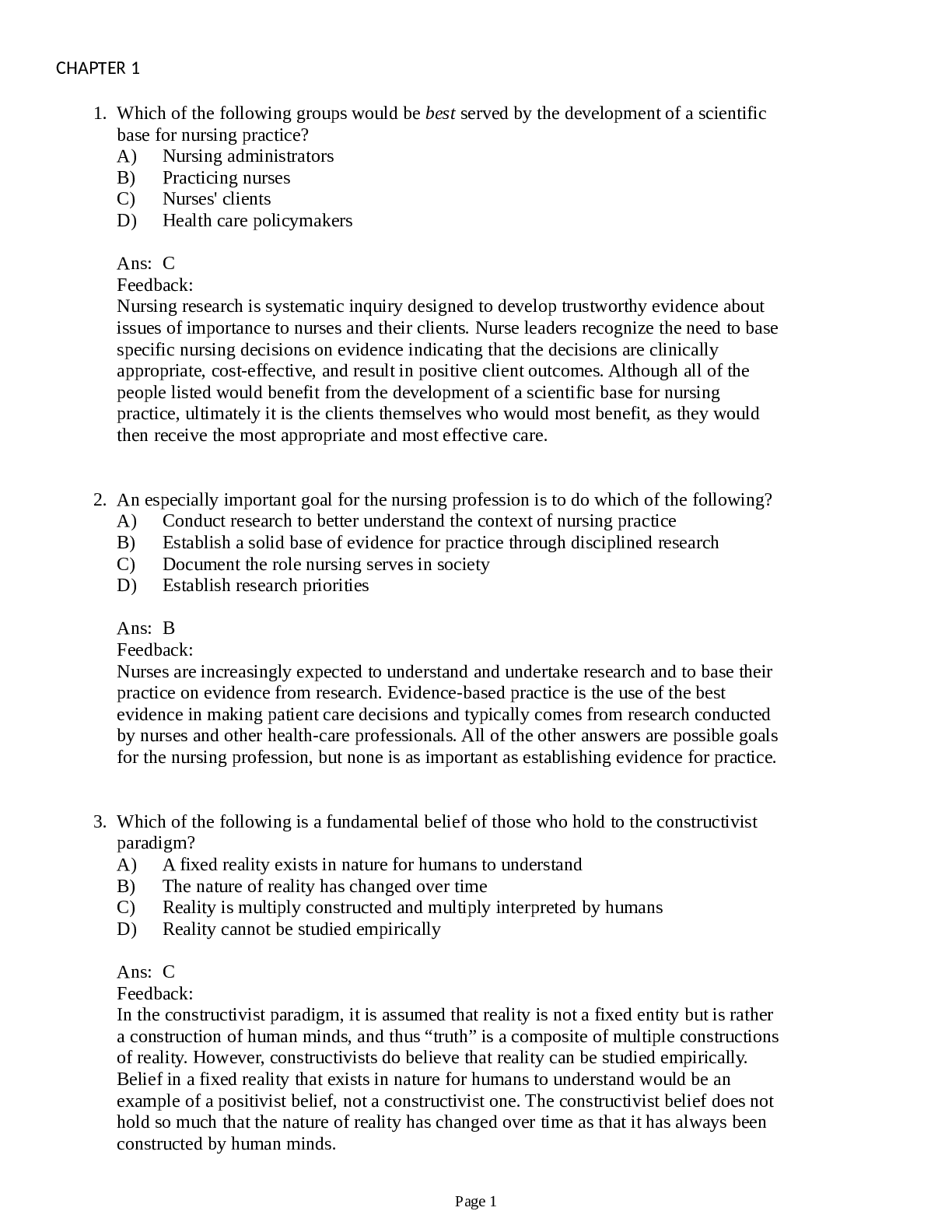

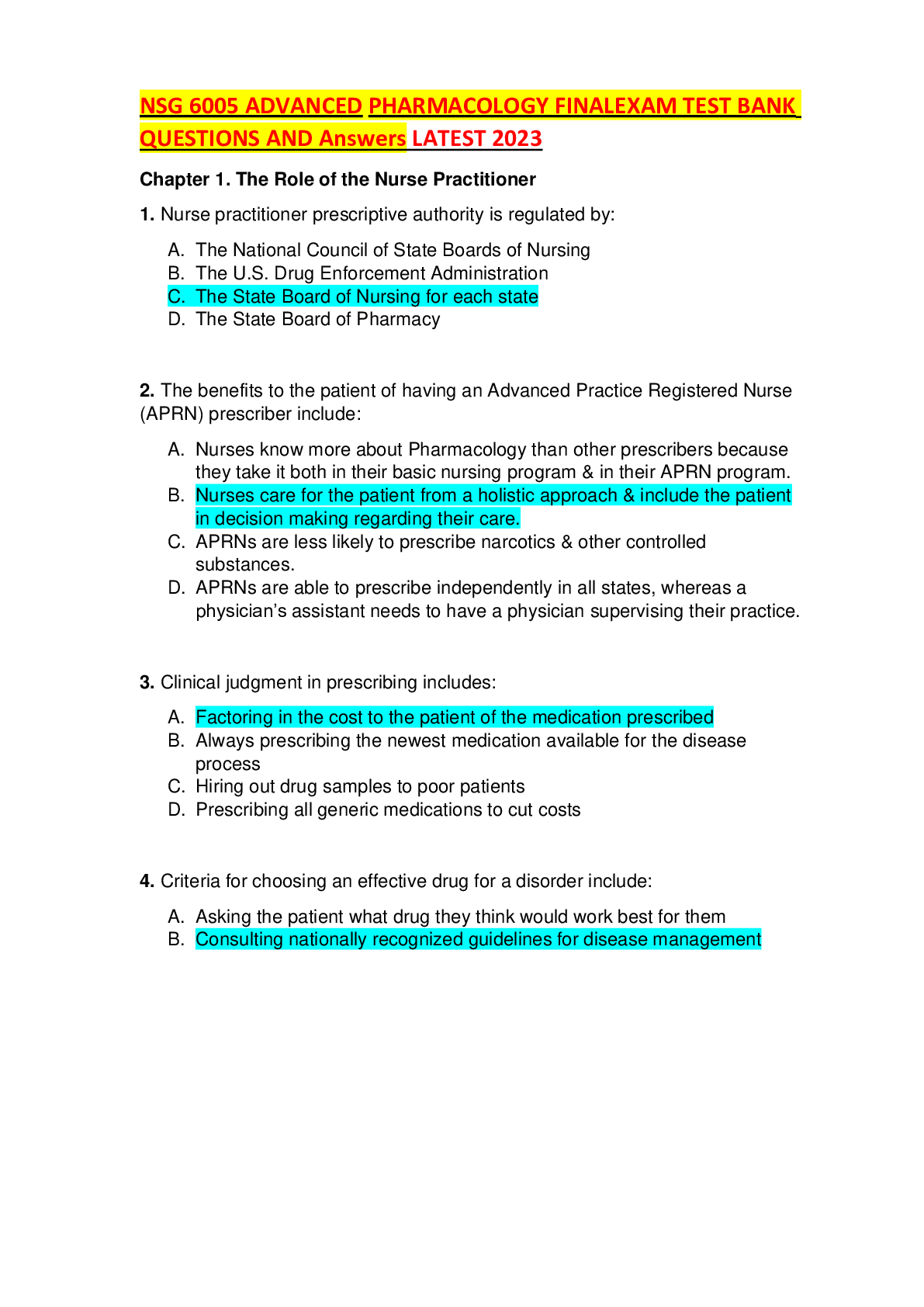
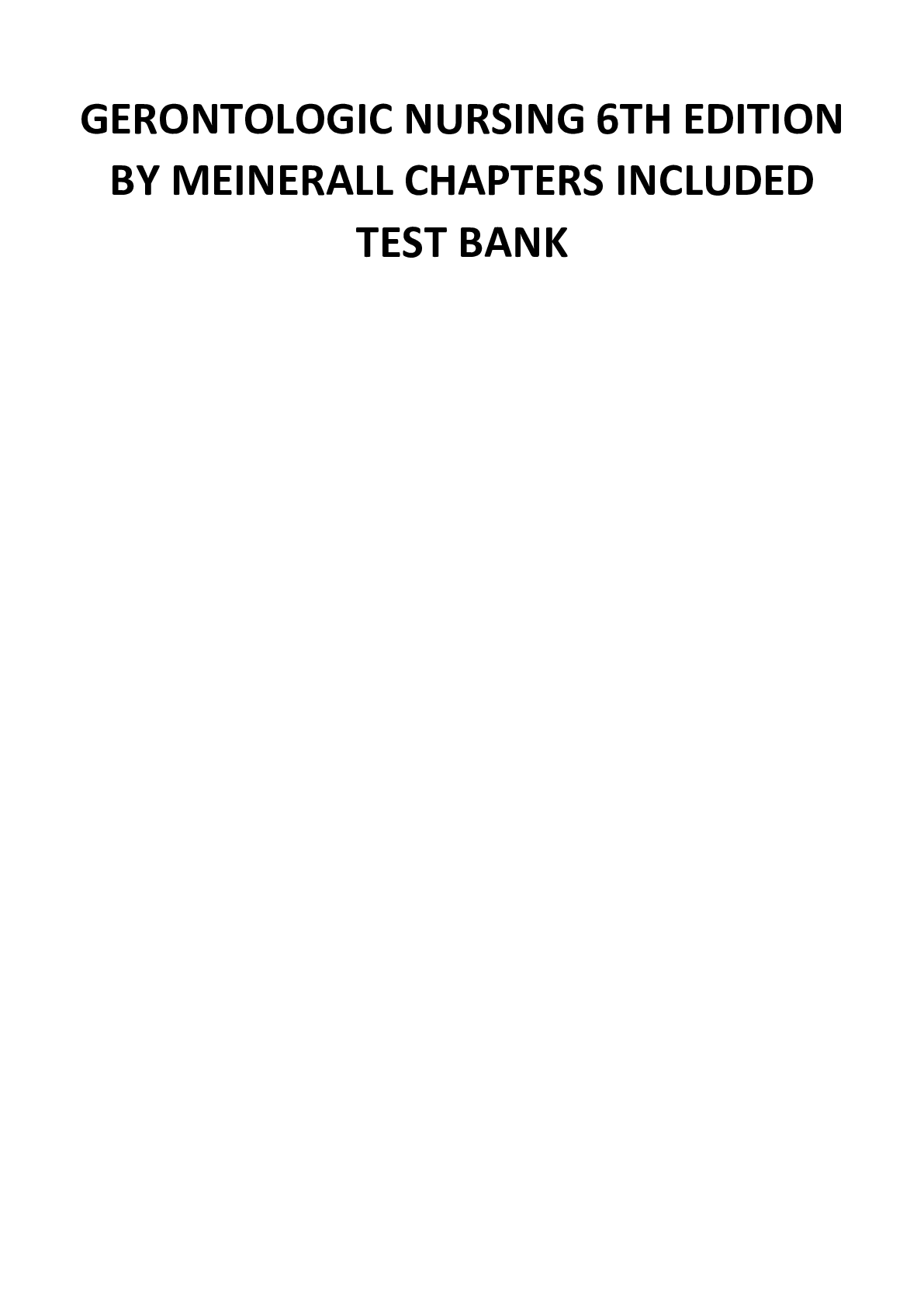
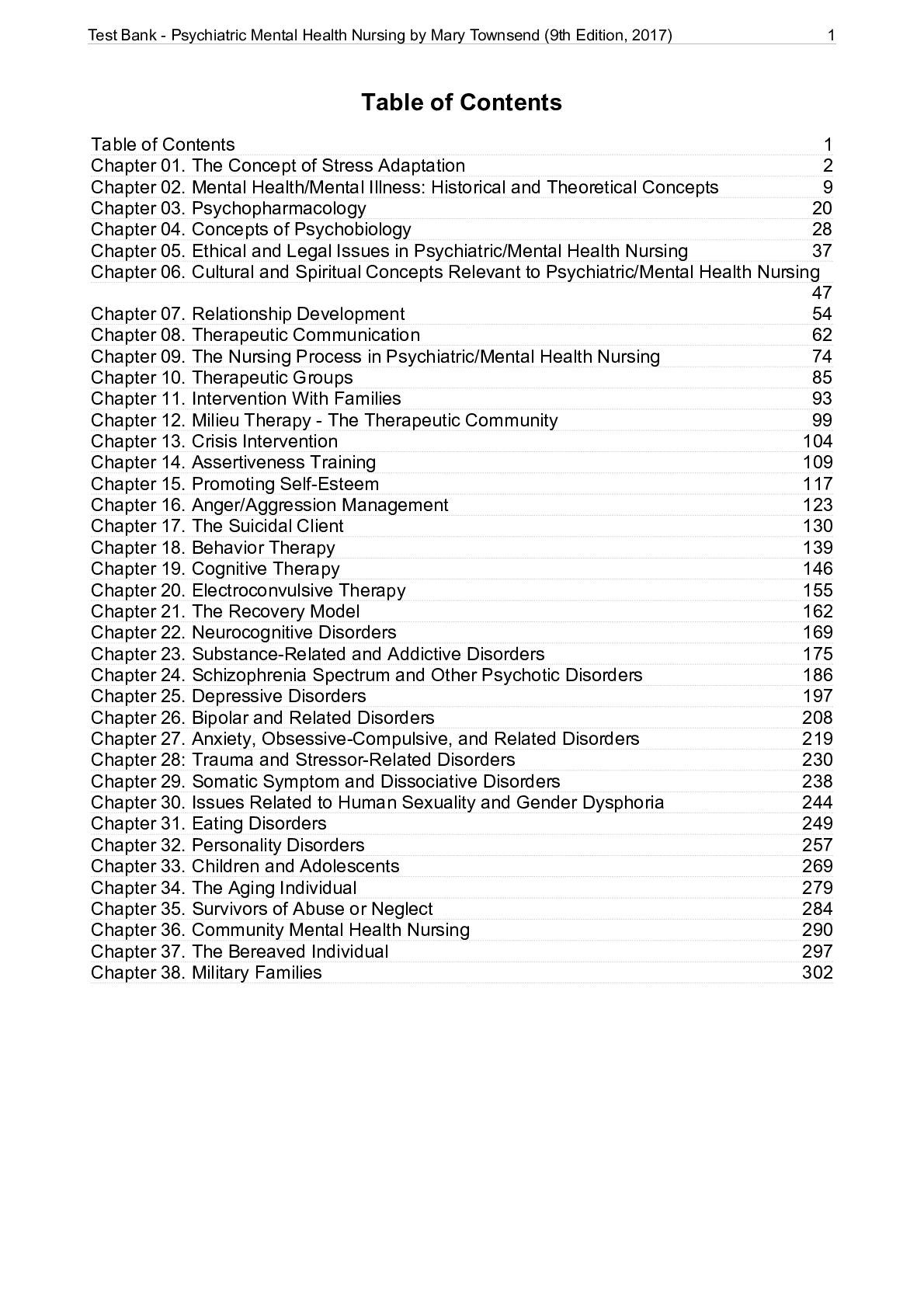
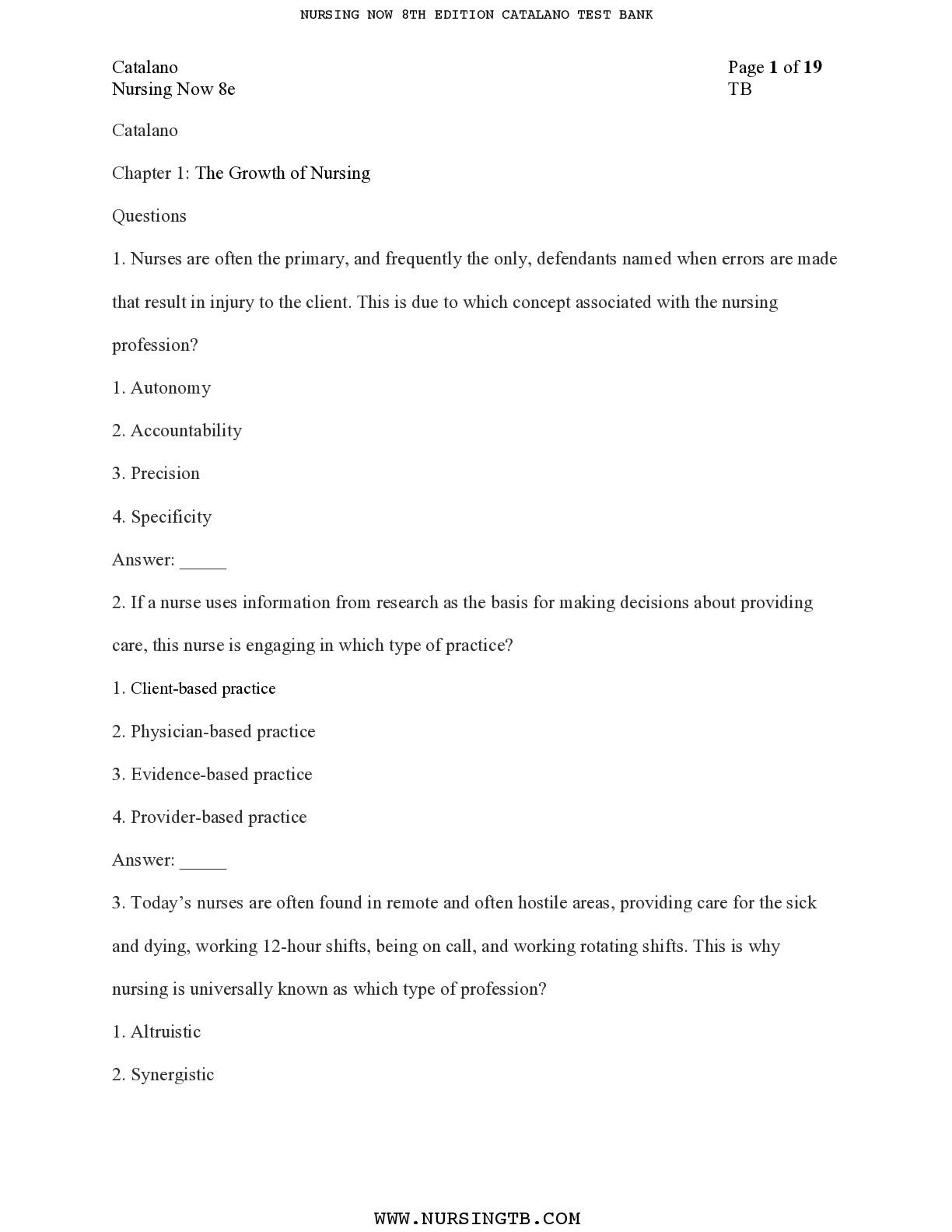
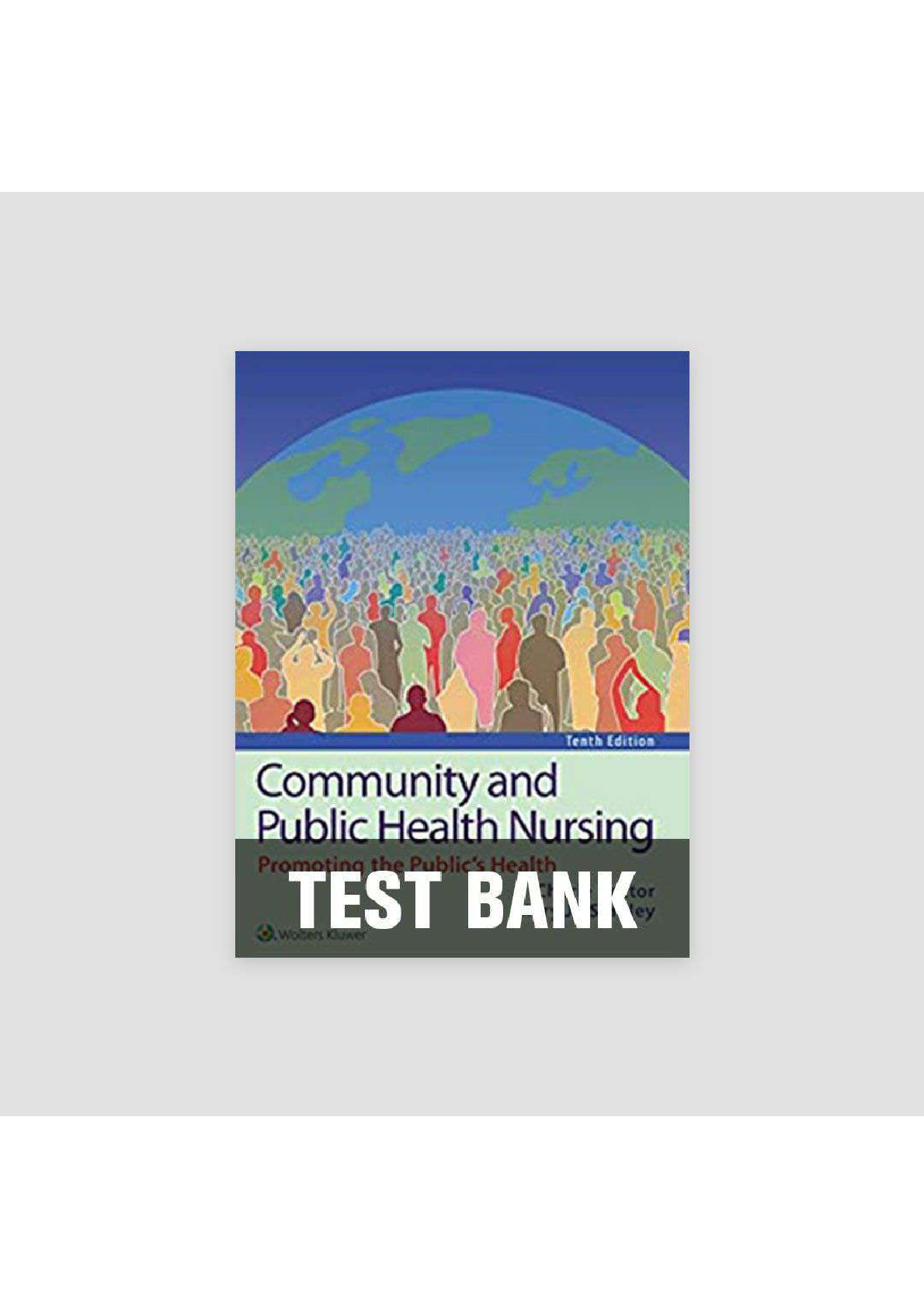
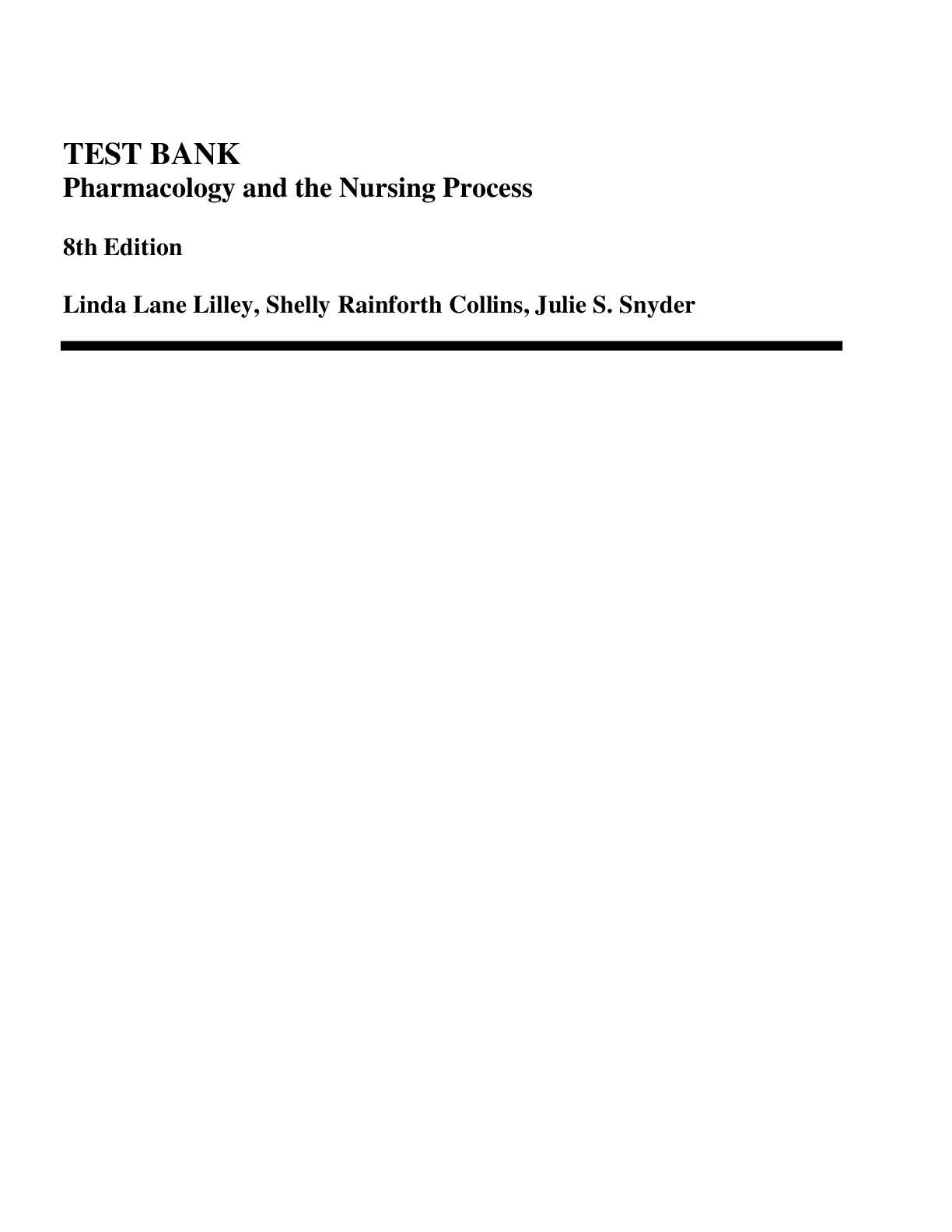

.png)
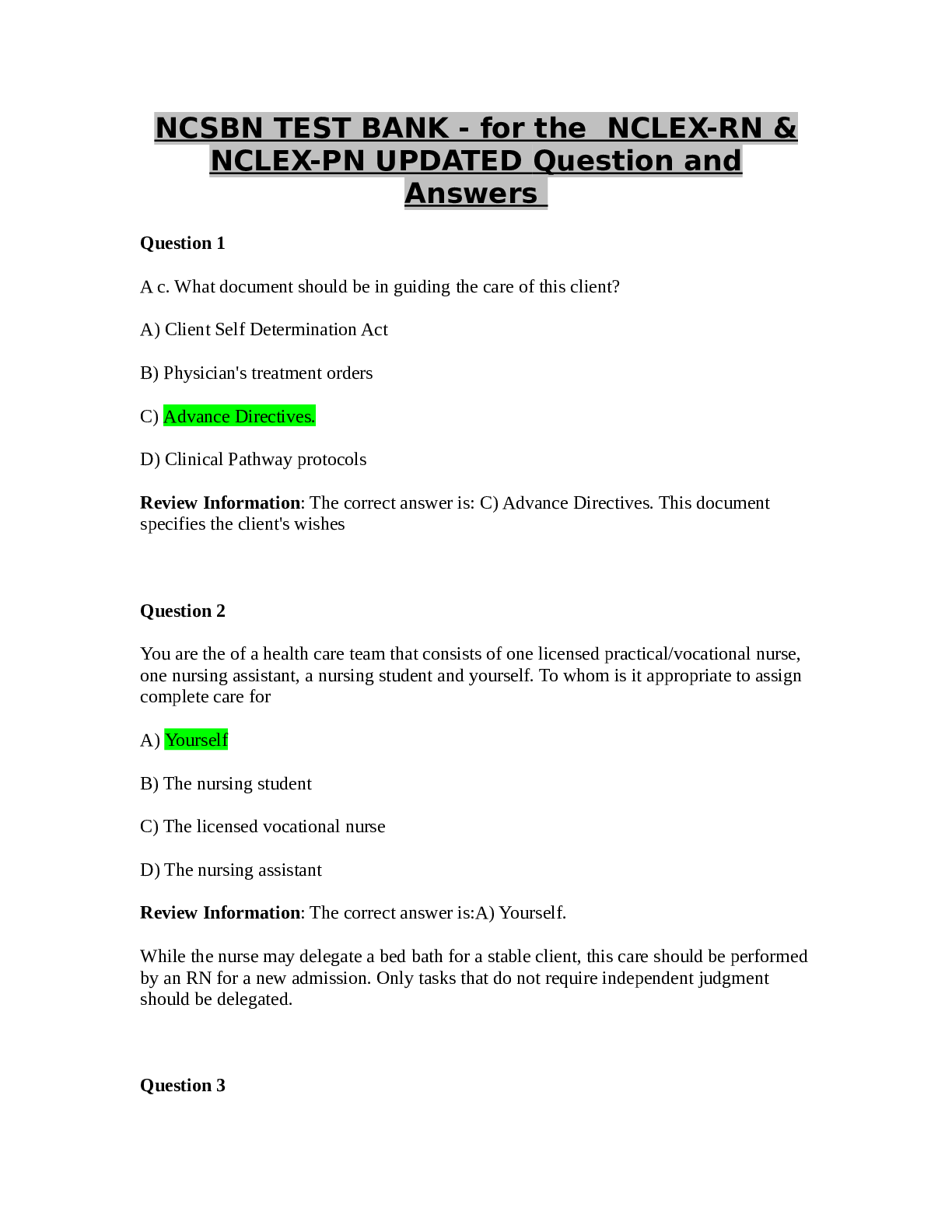
_compressed.png)


